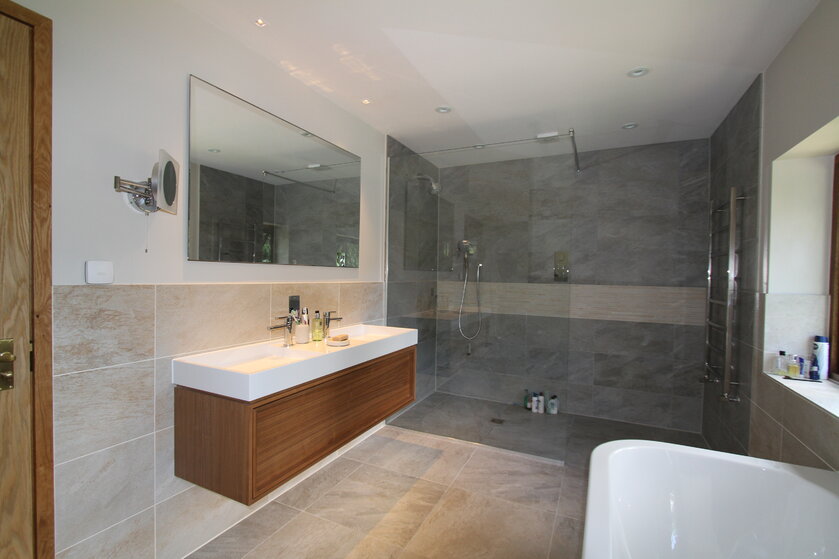It needs to be checked out as soon as possible, but I would also be concerned about the lack of tanking on the walls
You are using an out of date browser. It may not display this or other websites correctly.
You should upgrade or use an alternative browser.
You should upgrade or use an alternative browser.
Help! Tiled wetroom floor looks perfect but grout doesn't dry out!
UK Tiling Forum; Established 2006
Welcome to the UK Tiling Forum by TilersForums.com, built in 2006 by Tilers, run by Tilers.
View all of the UK tiling forum threads, questions and discussions here.
P
Paula
Yes, it's a concealed valve with a removable chrome plate, but it's a long way from the shower heads (there are two). Can you see it in the picture?Can we have a pic of the shower? Is it built in with a removable chrome plate?
Attachments
Doesn't matter how far away the heads are from the valve, the pipework behind the wall goes from the valve to each shower head
P
Paula
Yes, I have been concerned about this for a while, but I'm not sure how we can put it on now! Obviously if it's causing the current problems, then I feel I can go back to the builder and ask for the shower to be re-done, but at the moment I don't feel I have any evidence for this!It needs to be checked out as soon as possible, but I would also be concerned about the lack of tanking on the walls
I wonder if the plumber has pressure tested the showerhead pipework or just hoped for the best.....are there any spare wall tiles just in case?
P
Paula
I know he is very conscientious and would imagine that he did, but I suppose a problem could have arisen since?I wonder if the plumber has pressure tested the showerhead pipework or just hoped for the best.....are there any spare wall tiles just in case?
I think then that the plumber needs to make a hasty appearance to discount the shower valve and pipework as the cause.
P
Paula
Yes, I agree! But neither the builder, nor the plumber, have ever been "hasty"....plus now all the bills have been paid there is no incentive for them to come back.....I will let you know how I get on!I think then that the plumber needs to make a hasty appearance to discount the shower valve and pipework as the cause.
Thanks for your help, it means a lot.
I wish I had a close up picture of the shower outlet elbow, and facia plate.
Lets not hang the plumber just yet, could be faulty shower valve.
I had one at Christmas that decided to stream out of the spindle and down the back of the tiles onto the ceiling.
What make is the shower Paula?
Lets not hang the plumber just yet, could be faulty shower valve.
I had one at Christmas that decided to stream out of the spindle and down the back of the tiles onto the ceiling.
What make is the shower Paula?
Hold on a minute Bob, no-ones hung the plumber. This is a process of elimination and the next line of investigation is that the plumber needs to check the pipework and shower valve!!
The make of the valve is Crosswater Bob.
The make of the valve is Crosswater Bob.
Last edited:
There are similar tiling threads here
- Replies
- 5
- Views
- 721
- Replies
- 1
- Views
- 955
- Replies
- 0
- Views
- 400
Featured Threads
-
- F
- W
-
- I
-
-
-
Advertisement
Thread Information
- Title
- Help! Tiled wetroom floor looks perfect but grout doesn't dry out!
- Prefix
- N/A
- Forum
- UK Tiling Forum
- Replies
- 221

